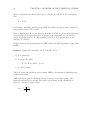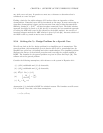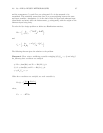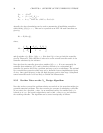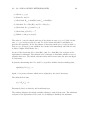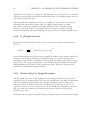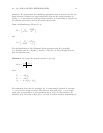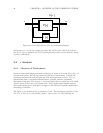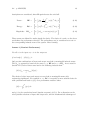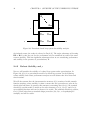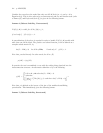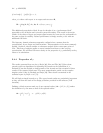
40 CHAPTER 2. OVERVIEW OF THE UNDERLYING THEORY
eigenvalue of X
∞
(and Y
∞
) is displayed. The ultimate test of the software is to form the
closed loop system and check both its stability and norm. We strongly suggest that the
user always perform this step.
The numerical issues discussed above are very unlikely to arise in low order systems.
Experience has shown that systems with very lightly damped modes are more
susceptible to numerical problems than those with more heavily damped modes.
However, it has been found to be possible, with the software provided, to design
controllers using 60th order interconnection structures with very lightly damped modes.
2.3.6 H
2
Design Overview
Recall from Section 2.1.2 that the H
2
norm of a frequency domain transfer function,
G(s), is
G(s)
2
=
1
2π
∞
−∞
Trace [G(ω)
∗
G(ω)] dω
1/2
.
Several characterizations of this norm are possible in terms of input/output signals. For
example, if the unknown signals are of bounded energy, G
2
gives the worst case
magnitude of the outputs e. Alternatively, if impulses are applied to the inputs of G(s),
G(s)
2
gives the energy of the outputs e. H
2
synthesis involves finding the controller
which minimizes the H
2
norm of the closed loop system. This is the same the well
studied Linear Quadratic Gaussian problem.
2.3.7 Details of the H
2
Design Procedure
The H
2
design procedure is best explained by contrasting it with the H
∞
procedure
explained in the previous sections. There are several differences, the most obvious being
that the H
2
design problem always has a unique, minimizing, solution. The other
difference is that (in addition to the four conditions given in Section 2.3.2) D
11
is
required to be zero, even in the general case. If this condition is violated no controller
will give a finite H
2
norm for the closed loop system as it will not roll off as the
frequency goes to ∞.
We present the H
2
solution in an LFT framework rather than the more well known LQG





